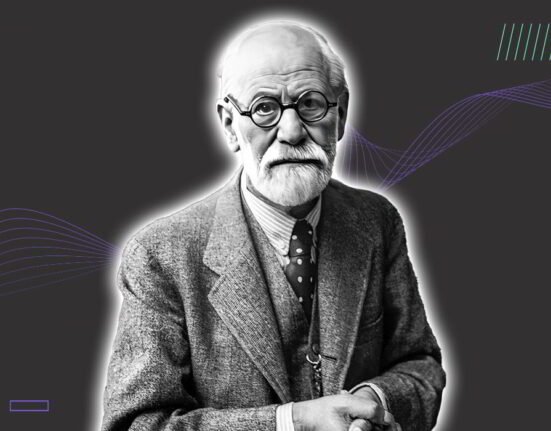Aristotle denoted happiness to have two aspects namely “hedonic” referring to pleasure and “eudaimonia” which portrays a life well lived. This was further explained by positive psychologists who believed a third aspect exists which relates happiness to engagement and participation in life. Some various self-assessment reports and tools measure happiness in context to subjective well-being, self-esteem, positive outlook in life and effective emotional regulation. A contrasting view of happiness describes it as a mere feeling devoid of distressing emotions where an individual actively participates in activities pursuing engagement.
According to Charles Darwin, it is an adaptive response to stressors in the environment and serves an important evolutionary function. Although negative and positive emotions both have adaptive functions, happiness elicits cognitive and emotional development. A research study conducted by Kringelbach in 2010, portrays that fundamental of it is derived from food and sex and it overlaps with higher-order pleasures serving aesthetic, monetary and altruistic motives.
Dopamine and Happiness
Dopamine is a neurotransmitter that plays a pivotal role in an individual’s pleasure, motivation and reward. Activities like exercising, eating chocolates, and accomplishing goals elicit dopamine release. The meso-cortical-limbic dopamine pathway, often referred to as the brain’s reward system, plays a crucial role in the regulation of emotions, memory, and feelings of gratification, which are closely associated with our experience of happiness. This pathway stems from the ventral tegmentum area which is a region in the midbrain. From the ventral tegmentum area, dopamine impulses are transmitted to the nucleus accumbens and further to the prefrontal cortex, each contributing towards the happiness of the individual.
Read More: The Role of Dopamine in the Mind
The ventral tegmentum is the engine of the dopamine reward system, which initiates dopamine release when exposed to pleasurable stimuli, such as accomplishing a goal, eating sweets or experiencing positive social interactions. The sense of purpose and anticipation is elicited by the individual’s motivation to indulge in these activities which release dopamine. The nucleus accumbens receives dopamine impulses from the ventral tegmentum area where it processes the sensation of reward and pleasure and reinforces behaviors that lead to an individual’s happiness.
For example, when an individual feels joy after accomplishing a challenging task or spending quality time with loved ones, the nucleus accumbens is activated. This area also plays a key role in emotional regulation, helping to balance excitement and happiness. This pleasure pathway extends to the prefrontal cortex which acts as a rational overseer and is responsible for decision-making, planning, and self-control. Here, dopamine contributes to evaluating long-term rewards versus short-term gratification, allowing us to prioritize activities that lead to long-term happiness instead of fleeting pleasures, thus helping us to create a sense of fulfilment and happiness.
Serotonin and Happiness
Serotonin plays an important role in mood regulation, emotional stability, and contentment. While it is not the sole determinant of happiness, serotonin’s influence on mood and behaviour makes it a key player in sustaining long-term happiness and mental health. It promotes prosocial behavior enhancing an individual’s cooperation and kindness.
It further plays a crucial role in increasing self-esteem thereby making individuals feel secure in their relationships. Moreover, it is involved in the cognitive tasks of memory formation and learning, thus positive experiences tied to serotonin release are encoded and these behaviours are more likely to be reinforced into an individual’s cognitive structures which elicit happiness and success.
Endorphins and Happiness
Endorphins act as stress relievers and mood elevators. They are neurotransmitters produced by the brain and nervous system that play a significant role in the experience of happiness. Endorphins contribute to feelings of pleasure, euphoria, and overall well-being. Their role in happiness stems from their ability to enhance mood. By dampening the effects of stress and discomfort, they create a sense of calm and resilience, which are foundational to happiness.
Endorphins bind to opioid receptors in the brain, mitigating the perception of physical and emotional pain. Endorphins are released post-exercise leading to a euphoric sense which is referred to as a runner’s high. This euphoria boosts motivation and creates positive associations with physical activity, reinforcing behaviours that lead to long-term well-being.
Oxytocin and Happiness
Oxytocin is a neuropeptide and hormone that plays a key role in social bonding, trust, and emotional connection. Its contribution to happiness is profound, as it underpins many aspects of human relationships and socio-emotional well-being. This hormone is responsible for fostering social connections by promoting trust and empathy.
Research studies have depicted that oxytocin facilitates cooperation and altruistic behaviour, creating a sense of fulfilment and mutual well-being. Oxytocin counteracts the effects of the stress hormone – cortisol, thereby promoting relaxation and calmness. This stress-buffering effect allows individuals to feel more at ease in social and emotional situations, which enhances overall happiness. This hormone is released during parturition or childbirth and breastfeeding thus, strengthening the bond between the mother and infant.
Amygdala and Happiness
The amygdala is a structure located in the brain’s limbic system, playing a significant role in processing emotions, particularly fear, anxiety, and threats. However, it not only identifies negative emotions but positive affect too. Research studies portray that an active amygdala can enhance emotional intensity, where it plays a pivotal part in amplifying it when positive experiences occur. The amygdala is highly sensitive to stressful activities which induce the release of cortisol which is the stress hormone. Chronic stimulation of the amygdala due to prolonged stress or fear diminishes happiness by increasing cortisol levels and anxiety.
Hippocampus and Happiness
The hippocampus is a structure in the brain’s limbic system, playing an essential role in memory formation, emotional regulation, and spatial navigation. Its function is not directly associated with the experience of happiness in the way neurotransmitters like serotonin and dopamine are, but it contributes significantly to long-term well-being and happiness by encoding positive memories, supporting emotional stability, and helping us learn from our experiences.
The hippocampus works closely with the amygdala to process emotions associated with happy memories. While the amygdala helps individuals assess the significance of positive emotions and happiness, the hippocampus allows one to interpret the same effectively. Positive memories stored in the hippocampus can shape the perspectives of an individual and reinforce optimism.
Neural Plasticity
It underlies the brain’s capacity to form new neural connections, reorganize existing pathways, and even recover from damage. This dynamic feature of the brain is crucial for emotional regulation, personal growth, and the pursuit of happiness. Practices like gratitude, mindfulness, and positive thinking can reshape neural pathways to promote sustained happiness. Studies portray that gratitude activates the brain’s reward pathways, enhancing feelings of joy and contentment.
Neuroscience shows that it is not a fixed state but a dynamic process shaped by our thoughts, actions, and habits. By leveraging the brain’s natural capabilities through mindful practices, physical activity, and meaningful connections, we can build lasting happiness. Moreover, during sleep, the brain processes emotions, consolidates positive memories, and eliminates toxins like beta-amyloid through the glymphatic system. Poor sleep disrupts the function and release of neurotransmitters thereby increasing stress and diminishing overall happiness.
Read More: 15 proven Tips for Better Sleep Hygiene
Hedonic spots are specialized regions in the brain associated with the experience of pleasure and the generation of positive emotional states. These “pleasure hotspots” are located in various areas of the brain, particularly within the mesocortical limbic dopamine system. They play a crucial role in creating sensations of happiness, joy, and satisfaction by regulating the release of pleasure-related neurotransmitters like dopamine, endorphins, and serotonin.
References +
- Kringelbach, M. L., & Berridge, K. C. (n.d.). The neuroscience of happiness and pleasure. https://pmc.ncbi.nlm.nih.gov/articles/PMC3008658/
- https://centerhealthyminds.org/assets/files-publications/Davidson-Neuroscience-of-happiness.pdf
- Esch, T. (2022). The ABC Model of Happiness—Neurobiological Aspects of Motivation and Positive Mood, and Their Dynamic Changes through Practice, the Course of Life. Biology, 11(6), 843. https://doi.org/10.3390/biology11060843
- Esch, T. (2022). The ABC Model of Happiness—Neurobiological Aspects of Motivation and Positive Mood, and Their Dynamic Changes through Practice, the Course of Life. Biology, 11(6), 843. https://doi.org/10.3390/biology11060843













Leave feedback about this